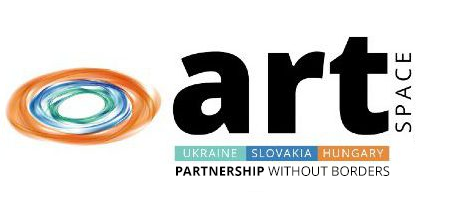THE CROSS-BORDER CULTURE ART SPACE (CBCAS)
HUSKROUA/1702/3.1/0052
“The information on this page does not necessarily reflect the official position of the European Commission.”
Partners:
Association Velké Kapusany and Surroundings
Carpathians Art and Culture Association
Pro Cultura Subcarpathica Non-Governmental Organisation
Prepared:
under the Hungary-Slovakia-Romania-Ukraine European Neighbourhood Instrument Cross-border Cooperation Programme 2014-2020 project THE CROSS-BORDER CULTURE ART SPACE (CBCAS) – No. HUSKROUA/1702/3.1/0052.
Program beneficiary: Association Velké Kapusany and Surrounding – Veľké Kapušany/Slovakia
Cooperation partners: Carpathian Art and Culture Association – Nyíregyháza/Hungary; Pro Cultura Subcarpathica – Beregovo/Ukraine
Project commencement date: 15 May 2020
Estimated project completion date: 14 May 2022
The aim of the project is to support activities that result in intensive and effective cultural, social and economic cooperation in the common border area of Hungary, Slovakia and the Ukraine (HUSKROUA).
The overall objective of the project is to create the conditions for the effective use of local tourism development capacities based on the cultural heritage of border regions. One of the cornerstones of this is the “Cultural Heritage Research” element of the project.
Introduction
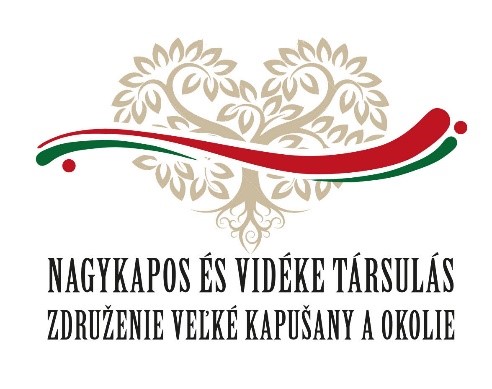
Association Velke Kapusany and Surrounding was established in 1999 in the Ung-region in Eastern Slovakia. The task of the civic association is to strengthen the economy of the Použie region, to nurture the culture and traditions, and to strengthen the Hungarian national identity.
Its activities are diversified, it assesses the cultural and educational needs of Hungarians who live in the Použie region, nurtures and researches folk traditions, implements cultural, public cultural and community events, researches, processes and preserves the lives and work of famous personalities associated with the region, publishes books, and organizes programs, trainings, courses, educational lectures, conferences and professional workshops.
Association Velke Kapusany and Surroundinghas been operating the Hungarian Community House in Velke Kapusany since 2003, which houses the János Erdélyi Memorial Museum, the László Mécs Library, the 1956 Memorial Room, the Fair Court, a training center and a hostel for students.
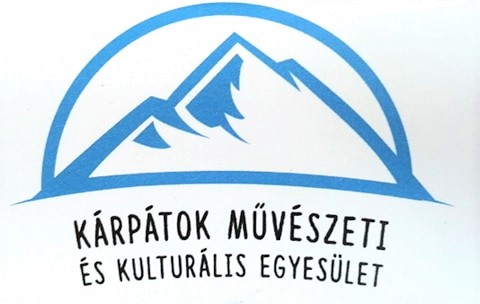
The most important task of the Carpathian Art and Culture Association (KMKE), founded in May 2007 by Hungarian and Transcarpathian artists, is to preserve and pass on Hungarian culture, cultural and historical heritage to the future generations in Hungary.
The main notion of the association is that culture connects us instead of tearing us apart. Culture has a nation-retaining power, but it also creates a bridge between different nations and thus mutually enriches them all.
The organization has been operating in Hungary, beyond the borders (mainly in Transcarpathia) and in Bavaria for twelve years. Over the past 14 years, it has organized countless exhibitions, creative camps, conferences, lectures, and collaborations and participated in other programs. It can be stated without any exaggeration that KMKE has the most competent contacts and references in the field of culture and art in Hungary, Transcarpathia and Szabolcs-Szatmár-Bereg county.
The social impact of the association’s cultural, value-saving and tradition preservation work can be said to be good nationally and internationally based on the feedback. Its members, as well as its partners, include a number of awarded individuals with academic degrees, thanks to whom it strives to perform high-quality, valuable work at all times.
Since May 2019, it has been operating an international creative house at its headquarters in Nyíregyháza-Sóstófürdő – MÁRIA CREATIVE HOUSE.
Further information: www.kmke.hu / Facebook: Carpathian Art and Culture Association
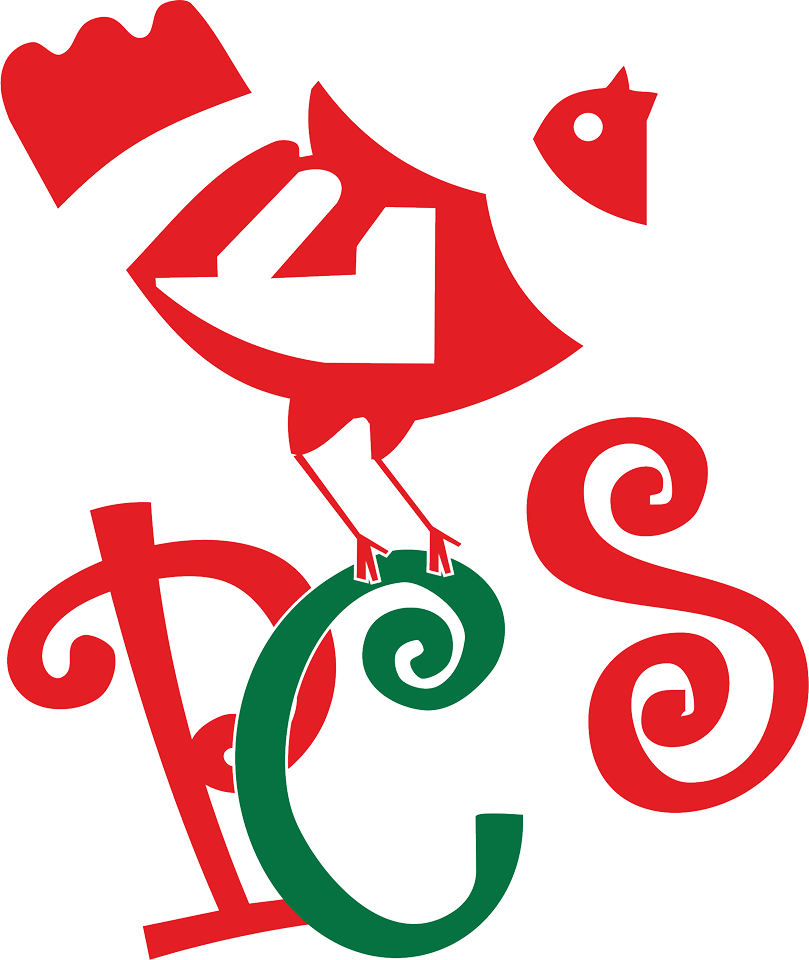
The NGO called Pro Cultura Subcarpathica (PCS) was founded in December 2010 and officially registered on 29 March 2011.
The aim of the non-governmental organization is to further build, strengthen and develop the Hungarian community in Transcarpathia through culture.
The organization is a non-political civil formation based on conservative values, but does not shy away from modern and postmodern interpretations of culture, subcultures, or contemporary initiatives.
The task of the organization is to make culture accessible to all members of its community, and to undertake the transmission of the traditions, culture and worldview of the Hungarians of Transcarpathia in the Carpathian Basin.
The organization organizes several cultural events each year. Participants from all over Transcarpathia visit each program depending on their size.
In addition, the programs of the Veliki Berehi country house maintained by Ferenc Rákóczi II. Hungarian College of Transcarpathia are also provided by the organization. Pro Cultura Subcarpathica aims to make the institution a live country house.
Situation of Upper Medzibodrožie and the Použie region
“A mountain rises during a cold night on the island of Medzibodrožie
Towards its landscape, alone, surrounded by forest at the waist.
It is green at the bottom but bare and rocky at the top.
Little Tice flows down in a hurry fleeing the foams of the Tisza
On its left, while Bodrog runs with a quiet tide on its right,
They are later marged in a narrow corner and leave
The smiling, beautiful scenery behind
The mountain, the singing grove, and a water-covered plateau.”
(Mihály Vörösmarty: The flight of Zalán)
The Medzibodrožie and Použie region are two neighboring regions in the southeastern part of Slovakia, near the Hungarian-Ukrainian border. Secluded regions, away from the hustle and bustle of big cities, about 500 km from the capital and 80 km from Košice, which is considered to be the county seat. In terms of public administration, the regions are located in the district of Košice and belong to two districts: Trebišov and Michalovce.
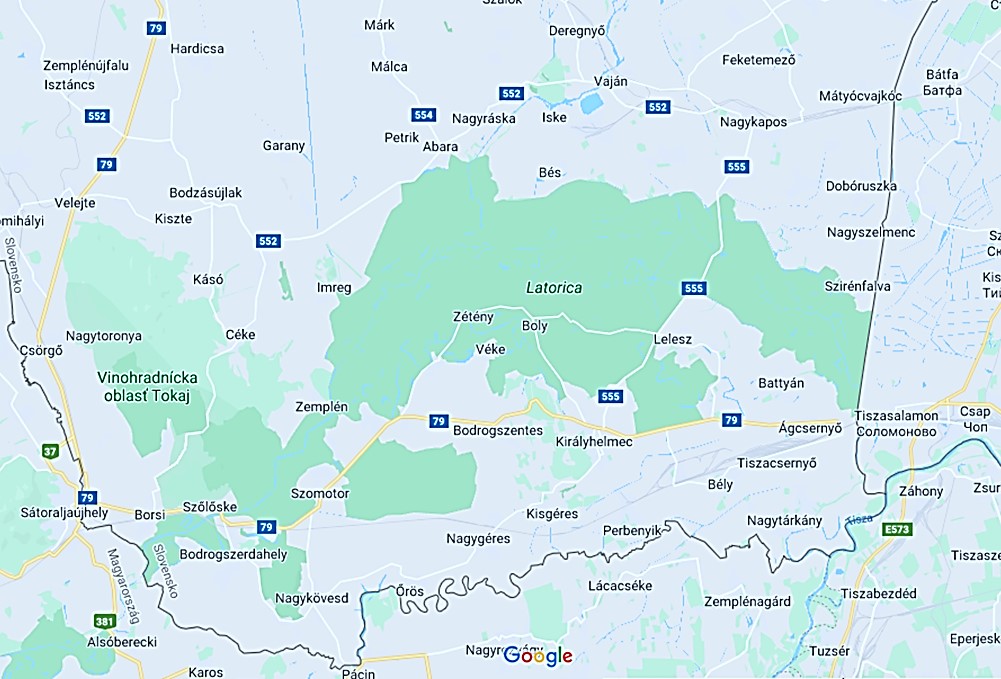
Medzibodrožie is a small geographical region surrounded by the rivers Tisa, Bodrog and Latorica, and is divided by the Slovak-Hungarian border. Its territory in Hungary is called Lower Medzibodrožie while the one in Slovakia is called Upper Medzibodrožie. It was one of the first sites occupied by the conquering Hungarians in the Carpathian Basin.
The Upper Medzibodrožie can be further divided into smaller units: the municipalities along the Tice, Karcsa, Tisa and Bodrog. It is bordered on the east by Ukraine, on the south by Hungary, on the north by the Latorica River, and on the west by the Zemplén Mountains. Upper Medzibodrožie is basically flat, its surface is dotted with some volcanic heights and sand hills. Its natural landscape includes volcanic, tuffy and gray andesite hills, quicksand and volcanic soils. It consists of 32 villages and a town, its center is Kráľovský Chlmec.
The river Latorica forms a natural boundary between Upper Medzibodrožie and the Použie region. The Ung region lies in a triangle of three rivers – surrounded by the rivers Latorica, Laborc and Uh. The region is adjacent to Ukraine to the east. Its surface is a completely flat area, consists of mostly agricultural plains, lowland landscape with lightly bound soil and clay along the rivers and backwaters. There are 17 settlements in the Použie region, Velke Kapusany and the villages that belong to its catchment area. Its villages are smaller in terms of area and population than the ones in Upper Medzibodrožie.
This region has always been avoided by major trade routes, and has never been the scene of fateful historical events. Due to its seclusion, however, it has preserved its diversity, human and natural values. The largest contiguous, original and natural floodplain in Central Europe is located here. It has significant ecological potential, with an extremely diverse flora and fauna. Backwaters, meanders, swamps, rich aquatic flora and fauna characterize the landscape, the area is rich in bird and fish species. In addition to several rare species, 37 highly protected and 177 protected animal species live here.
Traces of original nature can be discovered mostly around the rivers. The two regions boast a number of nature reserves, they are part of the NATURA 2000 nature reserve, the Latorica Landscape Protection Area, the Medzibodrožie Special Bird Protection Area and the Ramsar site.
Population, nationalities and religions
The area of Upper Medzibodrožie and Použie region is mostly inhabited by Hungarians. The total population of the two regions exceeds 56,000 persons. According to the data of the 2011 census, the proportion of Hungarian residents exceeds 72% in Upper Medzibodrožie, and 60% in the Použie region.
The proportion of Slovak residents is around 21-26%, and about 2-7% declare themselves to be Roma. In addition, a small number of Ruthenians, Czechs, Ukrainians, Poles and other nationalities also live here.
Out of the 50 settlements of the two regions, only 5 settlements are dominated by Slovak population: In Malé Raškovce, Zemplínske Kopčany, Brehov, Klin nad Bodrogom and Borša, and there is only one settlement with a large population of Roma people, Drahňov in the Použie region, with a 46.4% majority.
The region is heterogeneous not only in terms of ethnical but also religious aspect. The three classical major denominations, Roman Catholic, Reformed, and Greek Catholic dominate the region. It is not uncommon that all three denominations have a church in a settlement.
Economy and labor market situation, unemployment
Living a life close to nature was generally characteristic due to the natural geographical features of the area until the middle of the last century. Fishing, hunting, beekeeping and floodplain management gave the defining characteristics of each settlement. For example, large-scale shepherding was common in the settlements closer to Latorica (Čičarovce, Veľké Slemence, Ruská, Ptrukša, Beša). Typical fishing villages included Ptrukša, and Ižkovce and Beša along Laborec. The cultivation of certain crops reached a high level in one or two villages of the Použie region, and people specialized in the cultivation of a certain crop: Kapušianske Kľačany was famous as a vegetable-garlic village, Ižkovce and Beša were famous for their new potatoes, Velke Kapusany for onions and Vojany for its melons and Ruská for its squash. Several settlements of Medzibodrožie were famous for their grapes and wine cellars and still are today: Kráľovský Chlmec, Malý Horeš, Malý Kamenec.
As a result of the water regulation taking place in the region and the industrialization that appeared after the regime change, the settlements lost their defining characteristics. Agriculture remained the driving force, but large-scale industrial activity also appeared: the Vojany Thermal Power Plant, Eustream gas plants, Slovnaft Vojany, the Transpetrol oil refinery in Budka, and the CARGO Slovakia railway company and transhipment station in Čierna nad Tisou and Maťovce emerged. These are still the plants that employ the most people in Upper Medzibodrožie and the Použie region.
However, it can be said in general that everyday life is one of the most difficult in the Medzibodrožie and Použie regions. There is a high degree of emigration, mainly due to the low number of job opportunities in the area. While the elderly is mainly forced to leave their homeland or commute for work, the younger people are also encouraged to do so due to the lack of higher education institutions, poor infrastructure and few leisure opportunities.
According to the Ministry of Labor, Social Affairs and Family of the Slovak Republic, the registered unemployment rate in the two regions is around 11% (10.96% in the Michalovce district and 12.94% in Trebišov district), which is higher than the national average.
Unemployment rate by districts on 31 May 2020
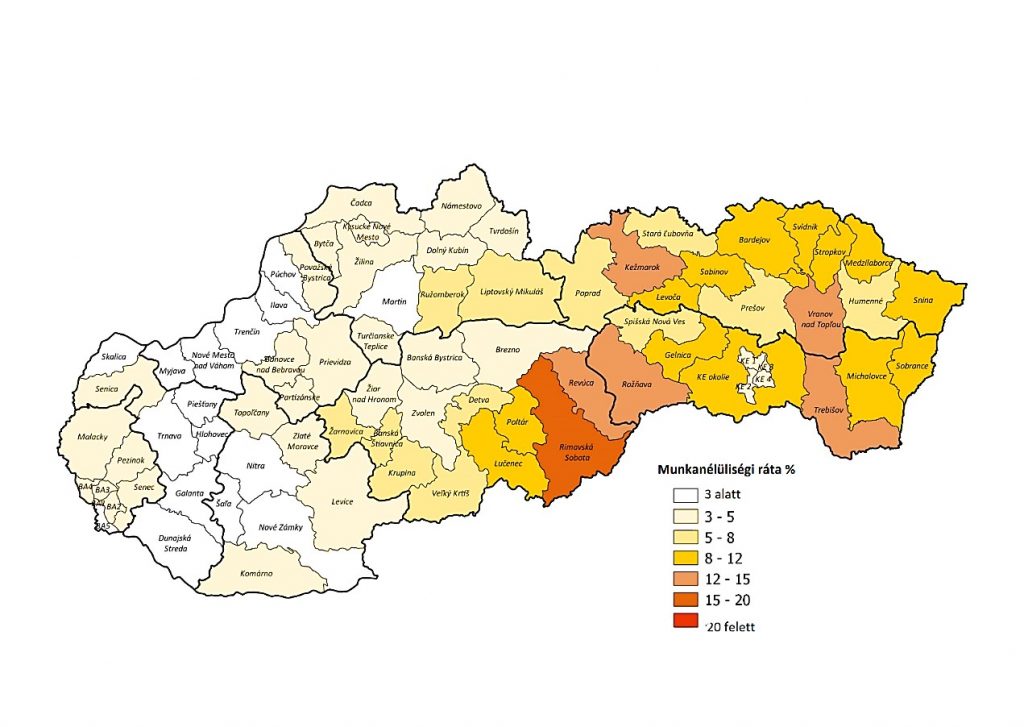
Source: Ministry of Labor, Social Affairs and Family of the Slovak Republic, May 2020
However, tourism and rural tourism, the natural, built, folk and cultural treasures of the two regions, as well as the related tourist attractions, events and festivals may constitute a major turning point.
Tourism in Upper Medzibodrožie and the Použie region
Even though Upper Medzibodrožie and the Použie region are not high-end tourist destinations, they have a rich tourism potential. The beautiful natural environment and the adherence of the people living here to the existing values, their helpfulness towards the visitors offers many opportunities to boost tourism. Upper Medzibodrožie and the Použie region have a rich heritage: it hides natural treasures; its settlements carry traces of history, castles, mansions, churches bear witness to ancient times; preserves and enlivens folk traditions and customs; the people who live here preserve the knowledge, art, culture and spirituality of their ancestors.
The region is dominated by nature tourism (hunting, fishing, walking and cycling tourism, ecotourism), rural tourism (wine tourism, gastrotourism, agro-tourism), cultural and educational tourism (sightseeing, cultural events and historical monuments, where people learn about local traditions and cultural heritage).
The rivers Latorica, Laborec, Uh, Tisa and Bodrog, which cross the region, have a great influence on tourism and leisure habits. The embankments of the rivers and the forests and pastures next to the embankments are popular among hunters, anglers, mushroom pickers, outdoor joggers and people who enjoy walking. The natural beauties of the region are popular: the Latorica Landscape Protection Area, the special wildlife of Lake Tajba, the Tarbucka Mountain, the suspended bridge connecting the two regions.
The area of Upper Medzibodrožie and the Použie region is ideal for cycling tourism. The roads are not too crowded, the area is relatively flat with slight inclines, so biking routes are not challenging even for less experienced cyclists. In addition, they pass through nature reserves, forests and embankments along the water.
There are currently two registered nature trails in the region for hikers. The Beša-Čičarovce nature trail is 15 km long and has 12 stations, including two lookouts where we can observe the life of protected birds. Its flora is made special by forest, aquatic and swamp species. And there are many rarities in its flora and fauna.
The approximately 3 km long Oborín Water Adventure Trail was completed in 2019. On the nature trail, the road leads through piles for 200 meters above the backwater of the Laborec. Depending on the season and the weather, we can observe the rich flora and fauna over dry beds, reeds or even a meter and a half deep water. We may encounter wild ducks, gray herons, water chicks and harmless snakes along the way.
At the end of the nature trail there is a bird’s eye view, and on the way to the embankment of the Laborec River there is a possibility for boating.
In Medzibodrožie, also known for its grapes, visitors can also take part in wine tourism. The Kráľovský Chlmec wine region is part of the eastern Slovakian wine region. The region is famous for its cellars carved into tuff (the most characteristic is the row of cellars in Malý Horeš). Local winemakers produce their wines in a classic way, most of them are recommended for direct consumption. Typical local wines include Riesling, Furmint and Linden leaf. Local producers present and sell their wines at the Open Cellar Days, as wines from this region are not available in shops and are very rarely found at exhibitions. The former Harvest Ceremony in Kráľovský Chlmec, now known as the Medzibodrožie Cultural Festival, is connected to the wine traditions of the region.
Gastrotourism is also present in the region: The tradition of preparing local specialties are nurtured in the framework of the Letcho Festival in Velke Kapusany, during the Geese Days on Martin’s Day in Veľké Trakany and during Plum Day in Malé Trakany. Medzibodrožie is famous for the Pastry of Ghirișa with cabbage (“káposztás béles”) which can be tasted by gourmets at several events, thanks to the activities of traditional groups and families. Gastro festivals are usually complemented by folklore and popular music, dance shows and craft fairs.
Agricultural (agro-) tourism also occurs in the area, namely at the Equestrian show jumping competition in Pribenik. The large-scale event is enriched by equestrian events, demonstrations of agricultural machinery and a fair.
The region also offers a wide range of attractions for cultural and educational tourists. The past comes to life among castle ruins (Čonkavár Castle – Kráľovský Chlmec, castle ruins in Veľký Kamenec), castles (Rákóczi Castle in Borša, Vécsey Castle in Streda nad Bodrogom, Majláth Castle in Pribenik, Sennyey Castle in Biel, Lónyai Castle in Drahňov), sacred monuments (Premontrei Abbey in Leles, Minorite monastery in Brehov, romanesque church in Svätuša), architectural monuments (St. Gotthard stone bridge in Leles) and museums (Salt House in Veľké Trakany, the Hungarian Community House in Velke Kapusany, the country houses in the Použie region, the József Majláth Regional Museum in Kráľovský Chlmec).
During the trip to Upper Medzibodrožie and the Použie region, you can get acquainted with the notions, statues and graves of the famous historical figures of the region. Few people know that Ruská in the Ung region is the resting place of István Dobó, the defender of the castle of Eger. The famous reformer thinker János Erdélyi was born in Velke Kapusany, and László Mécs, a priest and poet, was active in the Použie region and Medzibodrožie area. Their cult is decisive in the cultural life of the region: museums, statues, memorial days are tied to their figures.
Those interested in the traditions and customs of the people who live here may be interested in the “Brehovský Karičkový” dance, the former fishing customs or typical folk songs of Ptrukša. The tradition preserving groups operating in the region are presented at the Folklore Festival – Medzibodrožie and the Použie region.
Tourists who love nature and also want to gain knowledge can gain insight into the life of bees and the operation of Zlatý nektár beekeper in Malý Kamenec thanks to its owners. The lavender plantation in Kapoňa, Leles is also another interesting and unique attraction of Medzibodrožie, where we can pick the beautiful, useful and fragrant purple flowers ourselves “in small quantities”, similarly to the lavender harvest in Tihany.
Veľké Slemence became famous for tourists as a village divided by the Ukrainian border. The history of the Szekler gate, which symbolized the fragmentation of the locals, became a tourist attraction. Today, not only those interested in history arrive here, but shopping tourism has also flourished here due to the proximity of the Ukrainian border. An outstanding event of the border settlement is the Theater at the border, a summer theater festival.
The SWOT-analysis on the heritage of Upper Medzibodrožie and the Použie region
| STRENGTHS | WEAKNESSES |
· Beautiful and unspoilt natural environment · Rich and versatile values · Venues related to historical figures · Adherence to local values · People competent, experienced and willing to preserve traditions · The presence of young generation in the preservation and passing on of heritage · Renovated built heritage objects in the region · Hospitality of locals in the region and their willingness to help · Increasing attendance at cultural events · Development of the skills of those working in the preservation of traditions and culture by participating in trainings, courses and exchange programs · Favorable geographical location, thanks to which potential visitors can come from 3 different countries within a few kilometer radius | · Weak level of cooperation between the individual heritage sites, they do not know about each other’s events, and fail to cooperate · Heritage objects are not given enough emphasis: lack of promotional and information boards, lack of quality guide · Insufficient operation of information centers – a stranger does not know where and who to turn to, information about current events is missing · Inadequate promotion of local and regional values, lack of professional and targeted promotion: many locals do not know the values offered by the region, and the reputation of Medzibodrožie and the Použie region is even more difficult to forward to the wider environment. It often only takes place by word of mouth or through acquaintances. · Insufficient accompanying services (accommodation, meals, car rental) – the regions are not prepared for the actual presence of visitors. · Unexploited opportunities offered by nature: there are few high-quality hiking, walking and cycling trails. They do not take advantage of the opportunities provided by the river and its backwaters for boating and establishing resting places. |
| OPPORTUNITIES | RISKS |
· Growing interest in rural tourism, local gastronomy, preservation of traditions · Better utilization of EU and state funds/subsidies · Greater co-operation shall be established within the regions between the preservers of the individual settlements/heritage sites, to ensure a common program offer to keep visitors in the region for several days · Cooperation between the “owners” of cultural heritage and the tourism sector · Cooperation between cross-border regions to boost tourism Intensive promotion of heritage sites: use of the Internet and social networking sites to promote the values of the region | · Lack of interest in the values of their own region, people do not believe it can be interesting to anyone else · Large-scale emigration mainly due to job opportunities and further education, so there will not be sufficient people to preserve local values · Educated and talented people seek prosperity in other sectors, lack of expertise · The region’s difficult economic situation, unemployment: heritage objects are only of secondary importance · Lack of support for new initiatives at local, county and national levels · Most of the two regions are nature reserves, making them difficult to develop Impact of the pandemic |
“So this is a smaller part of our country,
accessible by crossing one of the three rivers or the border,
in which every broom shrub greets the visitor as an acquaintance,
mild hillside, moats covered by conferva,
the narrow forest strip along Latorica and the favorite music for us living in the Ung region,
the loudly spoken dialect with its still characteristic “í” sound,
with its short vowels, and special forms of verbs.
Yes, and the man of the Ung region, in my opinion,
is neither better or worse than any other people living in other parts of the world.
He is open-hearted and ready to make friends immediately.”
(Lajos Géczi)
Situation of Szabolcs-Szatmár-Bereg county
“Nyírség is the most beautiful landscape in Hungary. […]
The taste of the past, beautiful, old Hungarian world is there in each grass, tree and tree leave,
the smell of bread, the flow of water,
the knock of the long autumn rain, the good fragrance of winter,
the sound of village bells: reminds us of our fathers and ancestors,
whose traditions are sacredly respected in this region.”
(Gyula Krúdy)
Legislative framework
The protection of cultural heritage is regulated by Act LXIV of 2001 in Hungary. On 7 November 2011, the Parliament adopted an amendment to Act LXIV of 2001 on the Protection of Cultural Heritage, which introduced the concept of national and historical monuments.
According to the definitions laid down therein, there is no site declared a national monument in Szabolcs-Szatmár-Bereg county, however, the county does boast two historical monuments. Government Decree No. 303/2011 (23 December) includes Máriapócs, Shrine Church and Basilita monasteries, as well as the Reformed church and reception palace located in Nyírbátor.
There are 357 monuments in Szabolcs-Szatmár-Bereg county, it should be emphasized that Szabolcs-Szatmár-Bereg county has preserved most of the monuments in the area of the Great Plain.
Most of the monuments are located in the Bereg and Szatmár regions (especially the Fehérgyarmat micro-region), however, the concentration of monuments in Nyíregyháza and its catchment area is outstanding within the county.
More than half of the monuments in Szabolcs-Szatmár-Bereg county consist of church buildings, of which our medieval churches are especially unique and valuable.
| Protected heritage | Quantity |
| Church building | 206 |
| Cemetary | 3 |
| Folk church and architectural monument | 63 |
| Town building, public institution | 34 |
| Castle or its ruins | 3 |
| Castle, mansion, garden, other related | 47 |
| Farm, infrastructure, storage, transportation | 8 |
| Public artwork | 3 |
There is 1 monument area in the county – the area within the municipal boundaries of Tarpa and there are 5 monument environments: Anarcs, Csaroda, the surroundings of the reformed churches of Nyírbátor, the surroundings of the roman catholic church of Nyírbátor, the surroundings of the watermill in Túristvándi.
Act L of 2008 amending Act XXV of 2003 on the National Spatial Plan (Hungarian Official Gazette volume No. 2008/99) defines the area to be given priority in terms of cultural heritage. The data provided by the Minister of Education and Culture determines whether they are classified as Historic Settlements or World Heritage and Prospective World Heritage Sites.
It marked the following settlements in our region as historical settlements: Anarcs, Csaroda, Fehérgyarmat, Kisvárda, Mátészalka, Nagykálló, Nyírbátor, Nyíregyháza, Szabolcs, Tarpa, Tiszadob, Tiszavasvári, Túristvándi, Vásárosnamény. (Source: Szabolcs-Szatmár-Bereg County Regional Development Concept 2012)
Geographical environment
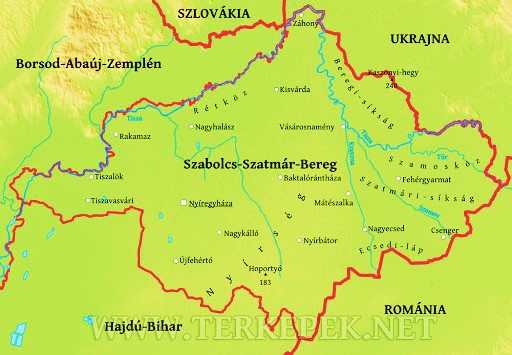
Szabolcs-Szatmár-Bereg county is located in the northeastern part of the country, and is basically a lowland area. Its special geopolitical position is determined on the one hand by its peripheral location and on the other hand by its vicinity to its eastern borders: it is bordered by Romania, Ukraine and Slovakia.
Within the country, it is bordered by Borsod-Abaúj-Zemplén and Hajdú-Bihar counties. The county forms the Northern Great Plain region together with Hajdú-Bihar and Jász-Nagykun-Szolnok counties, and is also a member of the North-Eastern Hungarian Regional Development Council, the Hungarian-Romanian-Ukrainian Interregion and the Carpathian Euroregion.
11 micro-regions have been established in the county, 8 of them – Baktalórántháza, Csengeri, Fehérgyarmat, Ibrány-Nagyhalász, Mátészalka, Nagykálló, Nyírbátor, Vásárosnamény – are among the most disadvantaged micro-regions of the country.
The number of the county’s population was 559.3 thousand in 2011, making it the third most populous county in the country excluding Budapest, with 5.6% of the population living here. Its area (5936 km2) accounts for 6.4% of the country’s territory, making it the fifth largest county in Hungary.
Natural and landscape geographical features
The three well-separated regions of the county are the Nyírség, the Szatmár plain and Rétköz:
Geographically, the county is diverse, combining elements of hills and plains. It can basically be divided into two larger regions, the Nyírség and the Upper Tisza region. Approximately 78% of Nyírség, which is the easternmost part of the Great Plain, belongs to the county, while among the small regions of the Upper Tisza region, Rétköz entirely, and parts of the Szatmár plain, the Beregi plain and the Ecsedi bog extend into the county. The highest point of the region is Kaszonyi Hill (240 m), but Hoportyó (183 m) is also considered as a significant elevation.
Hydrographic features
Tiszta is the largest river in the county. It enters Hungary at Tiszabecs from the Ukraine and leaves the county at Tiszadob. The other major rivers of the county include the Szamos, the Túr, the Kraszna and the Lónyai main canal (Eastern main canal). Its larger stagnant waters are Lake Nagyvadas (124 hectares), Lake Királytelek (23 hectares), and Lake Bujtos and Sóstó in Nyíregyháza.
Szabolcs-Szatmár-Bereg county is one of the richest regions in Hungary in terms of natural values. On the one hand this is attributable to its specific geographical position (proximity to the Carpathians, richness in rivers), high (18%) afforestation, on the other hand to a lower than average share of industry and relatively extensive agricultural practices due to poor soil conditions.
The county is under the jurisdiction of two national parks, the Bükk National Park and the Hortobágy National Park, and is currently home to a landscape protection area (Szatmár-Bereg Landscape Protection Area) and 11 nature conservation areas. (Source: http://www.terport.hu/megyek/magyarorszag-megyei/szabolcs-szatmar-bereg-megye)
Population, nationalities and religions
On 1 October 2011, 559.3 thousand people lived in Szabolcs-Szatmár-Bereg county, 21% of the county’s population lived in the county seat, 33% in other cities and 46% in villages. Those living within the municipal boundaries represented 97% of the population, while those living outside of it accounted for a higher-than-average 3.5%.
The Act on the Rights of Nationalities and National Minorities names 13 Hungarian national minorities, and 51,000 people living in Szabolcs-Szatmár-Bereg county declared themselves to belong to one of them during the 2011 census. The number of national minorities living in the county has increased by 75% since 2001.
The most populous national minority in the county is a Roma community of 45,000 persons, which accounts to 87% of the county’s national minorities. In addition to the Roma, there were more than a thousand Germans, Ukrainians and Romanians in the county, representing about 0.2% to 0.5% of the total population.
398 thousand people, 71% of the population declared to belong to a church or denomination in Szabolcs-Szatmár-Bereg county during the 2011 census.
In 2011, most of them, 194,000 declared themselves te be reformed and 182,000 to be Catholic, which indicates that the two largest historical churches have similar share. 11,000 people declared themselves Lutherans. The number of people who belong to a denominiation other than the former ones and the Orthodox Christian and Israelites religions over 10.000 people has more than doubled since 2001. This means that 49 % of those who belong to religious communities declared themselves to be Reformed, 46 % to be Catholic, 2.8 % to be Lutheran, and 2.7 % considered themselves to belong to other religious communities in the county.
Unemployment
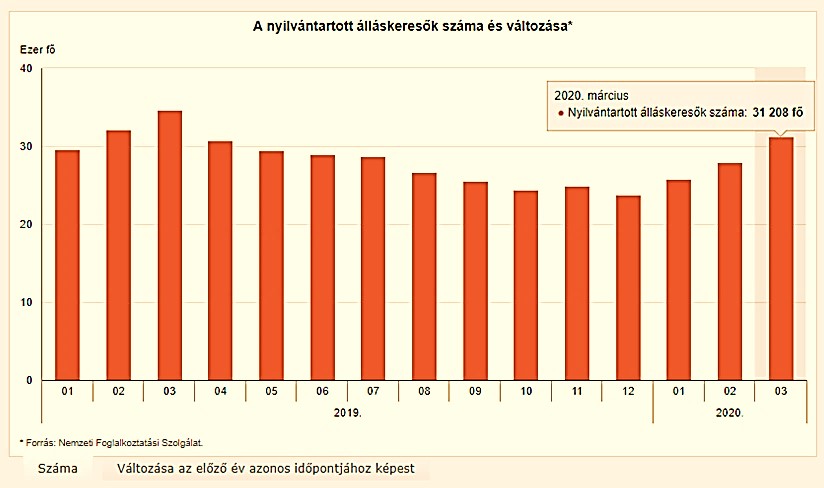
At the end of March 2020, 31,000 jobseekers were registered in Szabolcs-Szatmár-Bereg county. Despite the change in the economic situation during March due to the coronavirus epidemic, their number decreased by 9.9% YTD, despite the increase experienced nationwide. This allowed the trend of previous months to continue, the rate of decrease was the most significant here compared to all the counties and the capital.
47% of jobseekers could not find a job for up to 3 months, 23% could not find a job permanently for more than a year. The number of long-term unemployed was 2.9% lower than in March 2019.
Tourism
In terms of tourism, the county can be divided into four major tourism areas and destinations: Szatmár-Bereg Cultural Landscape, Nyíri field, Rétköz and Nyírség.
The center of Nyírség and at the same time the county is Nyíregyháza, the 6th largest settlement in Hungary with an extensive catchment area. The catchment area of the city extends to a significant part of Nyírség, mainly to Central and South Nyírség, 22 settlements belong to the destination.
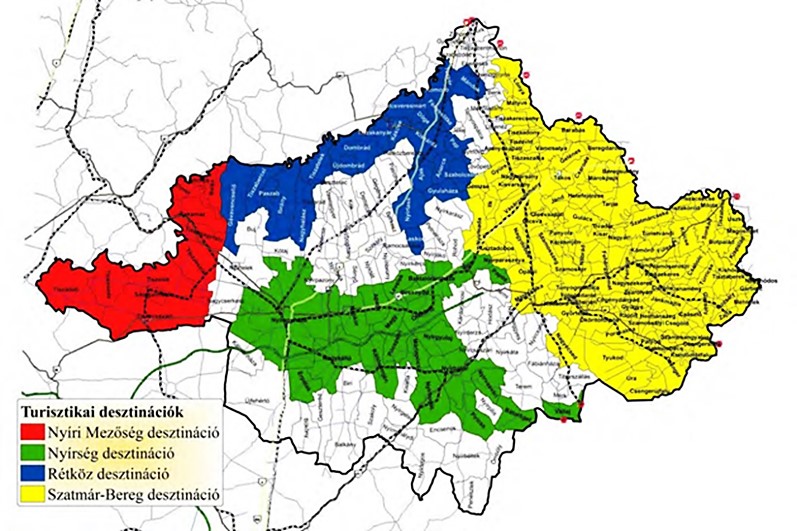
The county is very rich in monuments, there are 357 monuments in Szabolcs-Szatmár-Bereg county, it should be emphasized that Szabolcs-Szatmár-Bereg county has preserved most of the monuments in the area of the Great Plain. More than half of the monuments in Szabolcs-Szatmár-Bereg county consist of church buildings, of which our medieval churches are especially unique and valuable.
In addition to the medieval churches, a number of internationally renowned shrines and castles enrich the county’s heritage in Nyírség. In addition to the built heritage, the preservation of tradition and the diverse natural values enrich the range of attractions. Numerous gastro-festivals attract guests to this area, where in addition to entertainment, they can get acquainted with the gastronomy, traditions and folk art of the given region or settlement.
We can say that visitors can have fun on land, in water and the air all year round, depending on their motivation during their stay here:
- CULTURE, RELIGIOUS TOURISM, HERITAGE TOUR (Medieval Churches Route, Máriapócs National Shrine, Mária Route, Castle Visits)
- FAMILY-FRIENDLY ATTRACTIONS (Sóstó Zoo, Adventure Park, Wellness, spa and adventure baths)
- TOUR, NATURE WALKS (Great Plain blue hiking trail, bicycle paths, nature conservation areas which belong to the Hortobágy National Park, nature trails, water tours.)
- GASTRONOMY (Brandy (pálinka) tourism, Plum Road, Sticker Competition, Tirpák Festival, Panyola Festival, Wedding and Tradition Preservation Festival of Ajak)
SWOT analysis of the heritage sites of Nyírség and Bereg
| STRENGTH | WEEKNESSES |
· the region is rich in monuments · favorable natural conditions (forests, boating and fishing lakes, hiking trails, parks) · Sóstógyógyfürdő is a national health resort, it received a medicinal water qualification in 2013 · accessible by car, public transport, paved bike path · indoor and outdoor spa services, attractions · Sóstó is the 2nd largest open-air museum in Hungary in an area of 7.5 hectares · Nyíregyháza Zoo is internationally renowned and its development is continuous · Adventure Park · major cultural and gastronomic events (i.e. Vidor Festival, PanyolaFest; LeszFest; Tirpák Festival, Nyírség Autumn) · thematic trips · widespread rural tourism · TDM organization to bring together tourism actors in the region | · the most disadvantaged county in the country · high rate of unemployment · the assessment of the county is unfavorable · most people only associate the name of the county seat with the zoo · incomplete tourist information system · Nyíregyháza ranked 23rd on the list of the most visited settlements in 2018 · lack of quality accommodations · more frequent timing of vehicles in public transport would be necessary · the small railway between Nyíregyháza and Sóstógyógyfürdő was shut down · incomplete commercial services · parking capacity is pretty scarce · few accommodation providers speak a foreign language · most of the time visitors do not know what attractions and program possibilities to expect · the reputation of the attractions and services does not or hardly reaches the target group |
| OPPORTUNITIES | THREATS |
· invigorating tourism, growing desire to travel · the nearby Debrecen Airport brings foreign tourists to the county · cooperation between local businesses and service providers is strengthened and complements each other · investments become increasingly popular · expanding range of attractions · tender opportunities are available for the establishment and modernization of accommodations | · rapid increase in the number of competitors among tourism service providers · declining demand with sufficient financial resources · most families spend only the amount available on their SZÉP card on getaways · services do not reach the target audience · investments are not realized · negative impact of amended laws · seasonality · pandemic |
The situation of Transcarpathia
Legislative framework
Our cultural heritage is an irreplaceable, unique and irreplaceable source of our country’s past and present, an inseparable [W1] component of our national and universal culture.
In Ukraine, the protection of cultural heritage is regulated by law. The concept, subject matter, grouping, regulation, financing and protection of cultural heritage is provided for in the Constitution of Ukraine, On the protection of cultural heritage (08.06.2000, №39, Article 333).
Under the law, our monuments, built and intellectual heritage are protected by the state. These include our natural treasures, some of our settlements that still carry the past, our castles, palaces, churches, monuments, traditions, folk songs that are important to the community.
Our heritage research also aims to explore and present these values.
Geographical location of Transcarpathia
Transcarpathia (in Ukrainian: Zakarpatska oblast) is the westernmost county in Ukraine, its seat is Uzhhorod with a population of 112,447 people (based on 2017 data). The area of Transcarpathia is 12,752 km², making it one of the smallest counties in the country. In terms of population, the region ranks in the middle in the country: On 1 January 2018, the population was 1,258,155 people.[1]
One of the main features of the geographical location of Transcarpathia is that it is bordered by four countries: Poland in the northwest, Slovakia in the west, Hungary in the southwest, and Romania in the south. In addition, in the north-east it is a neighbor to Lviv county in Ukraine, and Ivano-Frankivsk county.[2]
83% of Transcarpathia is made up of hills and mountains, only 17% of its area is lowland. The area of the Great Plain (Ung Plain, Bereg Plain, Ugocsa Plain, Maramures Basin) is the north-eastern extension of the Hungarian Great Plain, its present surface was formed by the erosion and accumulation work of the Tisza and its tributaries.
The Transcarpathian part of the North-Eastern Carpathians is basically made up of the sandstone mountains and volcanic ranges.[3]
The three major mountain ranges of the Northeastern Carpathians are the Eastern Beskids and the Gorgons, which belong to a predominantly sandstone zone; the Polonias and the Vihorlat-Gutin range of volcanos bordering the Great Plain in the central and eastern part of the county and the Maramures Mountains in the southeastern part. The latter is home to the highest peak (2061 m) in Ukraine, Hoverla (old Hungarian name: Hóvár). Wide passes run through the ridge of the Carpathians. The most important ones are the Uzsoki pass (889 m) in the valley of the river Ung, the Verecke pass (841 m) in the Latorica valley, and the Tatar pass (921 m) in the Black-Tisza valley.
Hydrographic features
Transcarpathia is an area with plenty of surface and groundwater resources. Its rivers belong to the water system of the Upper Tisza basin. Its largest river is the Tisza, which originates in the Maramures Mountains, and its two branches, the Black and White Tisza merge at Rahiv (the main source is considered to be the Black Tisza). Due to the growing number of clearfelling in the Carpathians, river floods are increasingly causing landslides and floods (e.g. in 1998 and 2001). Other significant rivers include the Tarac, Talabor, Nagyág, Borzsa, Latorica and Ung. The largest and best-known lake is the 7 hectare Lake Synevir, which was created by nature when a landslide blocked the river valley. The area is very rich in mineral springs, medicinal and thermal waters.
Nowadays there is a biosphere reserve in Transcarpathia (Carpathian Biosphere Reserve), two national parks (Synevir and Ung), 49 (state and local) reserves, 8 landscape protection areas, more than 100 natural monuments and 44 cultural parks[4].
Administratively, the area of Transcarpathia has so far been divided into 13 districts: Berehove, Perechyn, Khust, Rahiv, Ilosva, Svalova, Mukachevo, Tiachiv, Velikij Bereznij, Uzhhorod, Vynohradiv, Volovec, Volové. There are 10 cities, 20 city-type settlements (market towns and large villages) and 579 villages and small settlements in the county, which belong to 295 village councils (mayor’s offices)[5].
Within the framework of the administrative reform started in 2019, the number of local governments and districts will change in Transcarpathia. According to the draft adopted on 17 July, there will be six districts (Berehove, Uzhhorod, Mukachevo, Khust, Tiachivand Rahiv), [6]and 64 micro-regions (hromada)[7]. The backbone of the city network is the cities of the Great Plain city line (Uzhhorod, Mukachevo, Berehove, Vynohradiv).
Map of Transcarpathia
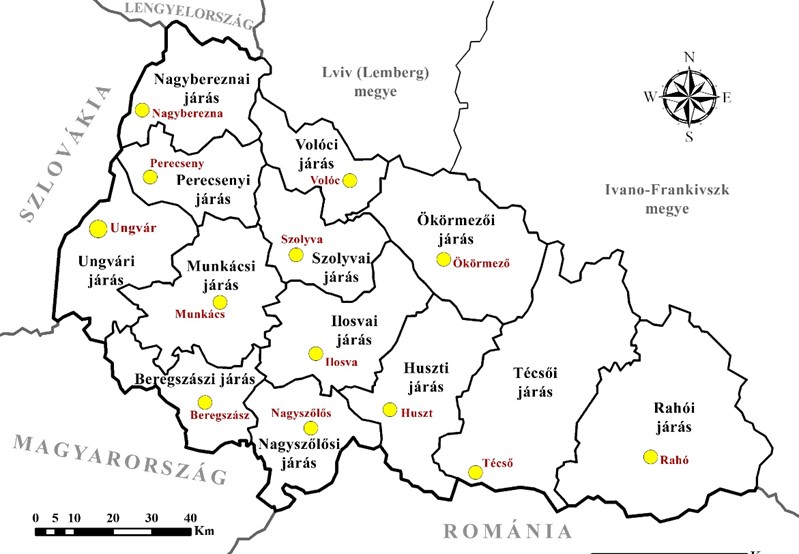
Demography, ethnic composition and religion
2.7% of the population of Ukraine (1242.6 thousand people) live in Transcarpathia. In terms of population, the county ranks 17th among the territorial units of Ukraine. Its population density is 97.3 people/km², which is higher than the national average (76 people/km²). The population is unevenly distributed in the county area[8].
In Ukraine, the last official census was held on 5 December 2001, according to which the majority of the Transcarpathian population was Ukrainians (80.5%). The second most important ethnic group was Hungarian with 151,516 people (12.07%). A total of 156,600 Hungarians live in Ukraine, the majority (96.75%) in Transcarpathia[9].
Nearly two thirds of the Hungarians in Transcarpathia live in the countryside, mainly in villages. There are a total of 78 villages and 2 so-called urban settlements (Batyоvо and Vilok) with a Hungarian majority in the area[10].
The Hungarian minority in Transcarpathia lives mainly along the Hungarian-Ukrainian border, in a 20-kilometer strip along the border. This area extends from Khust to the downstream region of the Tisza. There are only a significant number of Hungarians in the former royal towns of Maramures – Khust, Tiachiv, Vyshkovo, Solotvino and Rahiv. There is also a significant number of Hungarians living in the two big cities, Uzhhorod and Mukachevo. Of the large cities, only the center of the Hungarians, Berehove, retained albeit only a relative Hungarian majority (48%). The number of Hungarians has been steadily declining since 1920. Demographically, the assimilation of Hungarians is not rapid.
Mixed marriages are also present here, however, their assimilation does not prevail to the same extent as in the case of Hungarians in the Mura region of Slovenia. The main problem among the Hungarians in Transcarpathia is the sharp decline in the number of births and the increase in the number of deaths. The ageing population also causes a significant problem[11].
Similar to ethnic diversity, the distinctive features of Transcarpathia include a diverse religious composition. There are no official statistics on the share of religions in Transcarpathia, as census questionnaires do not cover this topic, and church denominations do not publish such data either.
Based on the available information, it can be said that the most influential religious denomination in the region is the Greek Orthodox (also known as Orthodox) church. Two-thirds of Ukrainians, most Russians, and some Romanians are also members of churches. There are Hungarians among the members of the Greek Catholic Church (9% of Transcarpathian Hungarians), and this religion is also widespread among Romanians.
In Transcarpathia, the reformed religion is considered a “Hungarian religion” and it is estimated that thousands belong to this church. In addition to Hungarians, some Gypsies also practice the reformed religion. The majority of Transcarpathian reformed people live in the lowlands, and the largest reformed congregations are also present here: Velika Dobrony (4,900 persons), Berehove (3,100 persons), Vyshkovo (3,100 persons).
It ranks only fourth in terms of the number of adherents of the Roman Catholic religion. The majority of the 40,000 churchgoers are Hungarian, and 21% of the Hungarians in Transcarpathia are Roman Catholics. In addition to Hungarians, Slovaks, Romanians and Ukrainians also practice this religion.
In addition to the historic churches, there are several “new” smaller churches present in the county (Baptists, Sabbatarians, Adventists), but there is no reliable estimate of the number of their members. Due to the ritual medium, there are few atheists (4-5%), but the proportion of those without denominations is also low, 10-20%[12].
Economy and labor market situation
The area of today’s Transcarpathia is not considered as a developed economic area. On the one hand, this is due to its special topographic conditions and on the other hand to its peripheral position: whatever country it belonged to in the past, it was always far from the center. It is also more than 700 km away from the current capital, Kiev.
After the collapse of the Soviet Union, and forced heavy industry and industry displaced in large areas, and the complete shutdown of the system, economic growth in this region did not begin until the first years of the 21st century. The structure of the Transcarpathian economy was transformed and the former leading industry has been replaced by the service sector.[13]
The development of infrastructure, in particular the improvement of the road network is a prerequisite for the development of tourism (and almost all economic sectors). The difficult cross-border interoperability constitutes a negative factor for the tourism industry, an issue that urgently needs to be addressed by both Ukraine and neighboring European countries.
The development of a more favorable economic and tourism future of the county in many respects also depends on the labor supply of Transcarpathia. Transcarpathia is also one of the counties with a strong labor surplus within the country. The unemployment rate is exactly 10%. However, the main problem is hidden unemployment. Many people leave Transcarpathia. The main destinations for migration due to lack of employment are the Czech Republic, Slovakia, Poland, Russia and, more recently, Western European countries[14].
Overall, Transcarpathia has a rich cultural heritage that should be taken into account and presented from the perspective of tourism developments. The development of tourism would bring many benefits to the region, above all, it could reduce migration and emigration due to lack of employment opportunities. The countryside is also attractive for religious tourists: visiting religious, sacred monuments, attending a religious event, coming to a pilgrimage or following a spiritual practice. Each religious denomination has a specific cultural and architectural heritage typical of Transcarpathia.
Our built and intellectual heritage, cultural treasures, natural values, community events and festivals can all serve the development of tourism, thus creating new jobs for the people who live here. However, in addition to taking stock of opportunities and goals, it is important to point out the shortcomings that slow down the development of tourism. There is currently no unified national or Transcarpathian tourism database, which is a serious problem, monuments are not monitored or a significant part of them are privately owned, so we do not have a comprehensive picture of the real situation of tourism.
[1] Based on data from the State Statistical Office of Ukraine. http://www.ukrstat.gov.ua/
[2] Sándor Berghauer. Gyula Fodor. Sándor Gönczy. Zoltán Karmacsi. Zsuzsanna Lontai-Szilágyi. Enikő Sass. József Tarpai. Attila Tóth. A kárpátaljai magyarság turizmusfejlesztési stratégiája. [The tourism development strategy of Hungarians in Transcarpathia.] Gáborprint, Beregszász 2019.
[3] József Hajdú-Moharos. Fehéroroszország, Ukrajna, Moldávia: Kárpátalja leírása: Földrajzi vázlat. [Belarus, Ukraine, Moldova: Description of Transcarpathia: Topographic sketch.] Balaton Akadémia, 1995.
[4] Dr. Antal Tóth. Magyarország és a Kárpát-medence regionális társadalomföldrajza. [Regional social geography of Hungary and the Carpathian Basin.] (In: https://regi.tankonyvtar.hu/hu/tartalom/tamop425/0038_foldrajz_TothAntal/ch01s37.html)
[5] László Zubánics. A kárpátaljai magyarság szülőföldjén való megmaradása elsősorban gazdasági fejlesztésekkel oldható meg. //A kárpátaljai magyarság a 21. száazadban. Esszék, tanulmányok. [Hungarians of Transcarpathia may stay in their homeland primarily if economic developments are made./Hungarians of Transcarpathia in the 21st century. Essays, studies.] Magyar Szemhatár, Nap Kiadó, Budapest 2018
[6] Dominika Tóth. Hat járást hagytak jóvá Kárpátalján. [Six districts were approved in Transcarpathia.] Kárpátalja.ma https://karpatalja.ma/karpatalja/kozelet/hat-jarast-hagytak-jova-karpataljan/
[7] National website of Decentralizacia. https://decentralization.gov.ua/areas/0312
[8] Based on data from the State Statistical Office of Ukraine. http://www.ukrstat.gov.ua/
[9] József MOLNÁR – István MOLNÁR D.: Kárpátalja népessége és magyarsága a 2001. évi ukrajnai népszámlálás hozzáférhető eredményeinek tükrében. [The population and Hungarians of Transcarpathia in the light of the available results of the 2001 Ukrainian census.] in.: László GYURGYÍK– László SEBŐK (ed.): Népszámlálási körkép Közép-Európából 1989-2002. Teleki László Alapítvány, Budapest, 2003.
[10] Sándor Berghauer. Gyula Fodor. Sándor Gönczy. Zoltán Karmacsi. Zsuzsanna Lontai-Szilágyi. Enikő Sass. József Tarpai. Attila Tóth. A kárpátaljai magyarság turizmusfejlesztési stratégiája. [The tourism development strategy of Hungarians in Transcarpathia.] Gáborprint, Beregszász 2019.
[11] Richárd Gyémánt, Tamás Katona, Pólay Elemér Alapítvány. Demográfia. [Demography] (In: https://regi.tankonyvtar.hu/hu/tartalom/tamop425/2011_0001_547_Demografia/ch14s04.html#ftn.id575669)
[12] Sándor Berghauer. Kárpátalja turizmusa. [Tourism in Transcarpathia]. Beregszász, 2012.
[13] U.o.
[14] Sándor Berghauer. Gyula Fodor. Sándor Gönczy. Zoltán Karmacsi. Zsuzsanna Lontai-Szilágyi. Enikő Sass. József Tarpai. Attila Tóth. A kárpátaljai magyarság turizmusfejlesztési stratégiája. [The tourism development strategy of Hungarians in Transcarpathia.] Gáborprint, Beregszász 2019.
SWOT analysis of the Transcarpathian heritage
| STRENGTH | WEAKNESSES |
· Favorable geopolitical location · Common development ideas at the level of the border region · Has a rich cultural heritage · Occurrence of rich ethnographic, historical traditions, values and attractions | · There is no road network built out · Partial lack of business infrastructure · The lack of a unified national or Transcarpathian tourism database means a big disadvantage · Monuments are not monitored or a significant part of them are privately owned, so we do not have a comprehensive picture of the real situation of tourism. |
| OPORTUNITIES | THREATS |
· Tourism development · The countryside is also attractive for religious tourists: visiting religious, sacred monuments, attending a religious event, coming to a pilgrimage, or following a spiritual practice. · Our built and intellectual heritage, cultural treasures, natural values, community events and festivals can all contribute to the development of tourism · Development of business infrastructure · Utilization and development of rich ethnographic and historical traditions, values and attractions | · Difficulties of infrastructural developments · Further decline in the population retention power of the region, emigration of skilled professionals · Increased unemployment |
Conclusion
During the heritage research, 150 heritage sites were presented, whose list is attached hereto.
It can be clearly stated that the presented regions are extremely rich in terms of attractions, cultural and built heritage, natural values.
Regarding the settlement structure of the regions, it can be stated that we can talk about small-town, rural landscape units. With the exception of county towns, they lack the developed infrastructure of large cities, a wide range of accommodation and catering facilities (restaurants, clubs, cafes, etc.). Contrary to this development, the “countryside” is liveable, it provides an environment less burdened by air and noise pollution and provides relaxing conditions for guests, which factors are of benefit to those involved in tourism and rural accommodation.
Personal meetings and discussions revealed the problems and risks, as well as the unexploited opportunities that characterize those working in the field of culture, tourism and hospitality, and, if necessary, are to be solved. In many cases, we have encountered a neglected attraction that can be visited periodically due to lack of financial resources, but the biggest concern is the lack of expertise.
Economic competition requires a constant presence on various media platforms as today’s people learn about things over the Internet. Even if the business or attraction is not presented over the Internet. Furthermore, it is not enough to make a destination attractive, up-to-date information, complex services and program packages are needed in order to fill the time intended for recreation with content for the tourist.
Experience, regardless of region, shows that the development of tourism is clearly a leap forward in the labor market.
In line with the primary goal of the project, “to strengthen the cooperation of the three participating cultural organizations in the development of tourism-oriented cultural products, contributing to the social, economic development and well-being of the region’s population” we worded the positive effects of the planned development on the economy, job opportunities and local communities.
It may generate income for economic operators – local residents, businesses, accommodation providers, attraction operators, suppliers, may create or maintain jobs and improve the quality of life of the people who live here.
As far as settlements are concerned, it builds community, creates an opportunity to get involved in tourism, gives tourism actors a say in the preparation and adoption of local decisions. It contributes to the protection and passing on of local values.
Tourists gain experiences with the personal contribution of the locals, get an insight into their lives, and share their satisfaction with their friends, spread the good reputation of the settlements and regions, and establish a relationship of trust between the locals, visitors and guests.
A direction of development was outlined based on this knowledge:
through our associations we want to make sure that destinations are really visited by tourists in Bodrogköz and the Ung region (Slovakia), in Szabolcs-Szatmár-Bereg county (Hungary) and Transcarpathia (Ukraine). Gastronomic, religious or heritage tourism and a thematic route should not solely exist over various Internet sites, the region shall be an attractive destination with other added attractions.
In addition to the existing local thematic routes, the offer can be expanded by creating new ones covering all regions. We know that advertising tourist attractions or an event alone is not enough. A complex offer shall be presented to the visitors in order to increase the number of guest nights, to ensure that guests return from time to time, to generate new visitors through their satisfaction and to send out the reputation of our services and region. So the real task is operation and long-term maintenance. However, this requires trained professionals in the field of accommodation management, hospitality and marketing.
List of heritage points
| Heritage point | Ung, Bereg, Ugocsa, Maramures Transcarpathia | Upper Bodrogköz and Ung region | Szabolcs-Szatmár-Bereg county especially Nyírség, Bereg |
|---|---|---|---|
Built heritage | 1. The castle of Uzhhorod 2. The Greek Catholic Cathedral in Uzhhorod 3. The Episcopal Palace in Uzhhorod 4. The mini-statues of Uzhhorod 5. The ruins of Nevytzke castle 6. Church of Gerény (rotunda) 7. The ruins of the Serednie castle 8. The Dobó cellar in Serednie 9. Ruthenian wooden churches in Transcarpathia 10. The monument of the Hungarian conquest on the Verecke pass 11. Casino of Bereg county 12. Remains of the Árpád line at Felsőgereben 13. Castle of Chynadiyovo 14. II. Horse statue of Ferenc Rákóczi in Berehove 15. Mukachevo Castle 16. Natural monument and wailing wall of Svalova 17. Choma Conquest Memorial and Statue Park 18. Turul monument 19. The castle in Korolevo 20. Kankiv castle in Vynohradiv 21. The ruins of the Khust castle 22. Reformed church in Tiachiv 23. Reformed church in Khust | 1. Rákóczi castle in Borša 2. The ruins of the Veľký Kamenec castle 3. Vécsey castle in Streda nad Bodrogom 4. Ruins of the Csonkavár Castle – Kráľovský Chlmec 5. Majláth castle – Pribenik 6. Sennyei castle – Biel 7. Premontrei Abbey – Leles 8. St. Gotthard stone bridge – Leles 9. Lónyai castle – Drahňov 10. Minorite monastery – Brehov 11. Grave of Eusztach Sujánszky 12. Reformed church in Svätuše | 1. Medieval churches 2. Reformed church in Csaroda 3. Reformed church in Tákos 4. Báthori castle and waxworks, city history promenade – Nyírbátor 5. Reformer church and roman catholic Minorite church in Nyírbátor 6. Shrine of Máriapócs National shrine 7. Dégenfeld castle – Baktalórántháza 8. Watermill of Túristvándi 9. Lónyai castle – Tuzsér 10. Castle of Kisvárda 11. Kállay House – Nyíregyháza 12. Kállay castle – Kállósemjén 13. Monuments of Sóstófürdő – Krúdy Restaurant 14. Monuments of Sóstófürdő – Swiss house 15. Monuments of Sóstófürdő – Water tower |
Natural attractions/ Tourist destinations | 1. Medicinal waters of Lumsori 2. Waterfalls of Lumsori 3. Bathing in a cauldron 4. Schönborn-park (District of Perechyn) 5. Pacsirta spa 6. Kosino spa 7. Veljatyin thermal water 8. White and Black Tisza merge at Rahiv 9. Sipot waterfall 10. Lake Synevir 11. Hoverla 12. Valley of Narcissi | 1. Latorica Landscape Protection Area 2. Suspension bridge over Latorice 3. Tarbucka 4. Tajba 5. Salt house in Veľké Trakany 6. Lavender plantation – Kapona, Leles 7. Hungarian Community House – Velke Kapusany 8. László Mécs Library – Velke Kapusany 9. János Erdélyi Memorial Museum – Velke Kapusany 10. Memorial room 1956 – Velke Kapusany 11. József Mailáth Regional Museum Kráľovský Chlmec 12. Volcanic tuff cellars in Malý Horeš 13. Veľké Slemence, the village cut into two | 1. Tisza blooming 2. Sóstó Lake Bath 3. Sóstó – Hotel Fürdőház 4. Sóstó – Aquarius spa 5. Sóstó Park Bath 6. János Tuzson Botanical Garden 7. Nyíregyháza Zoo 8. The path of medieval churches on both sides of the border – Heritage tours 9. Primeval bog in Bátorliget 10. Baktai forest 11. Forest of Sóstó |
| Cultural and ethnographic values | 1. Live traditions of Velika Dobrony 2. Woven textiles in Berehi 3. Veliki Berehi country house 4. Katalin Polónyi Textile Museum 5. Preservation of tradition in Salanki 6. Archery in Salanki 7. Vyshkovo country house 8. Basket weaving in Iza | 1. Country houses in the Ung region – Kapušianske Kľačany 2. Country houses in the Ung region – Malé Raškovce 3. Country houses in the Ung region – Cicarovce 4. Country houses in the Ung region – Abara 5. Aranynektár beekepers – Malý Kamenec 6. Plum brandy in Malé Trakany 7. Ptrukša folk heritage – fishing 8. Ptrukša folk heritage – folk songs 9. Traditional dance of Brehov (“Imregi karikázó”) 10. Grave of István Dobó – Ruská 11. István Dobó statue and square – Velke Kapusany 12. István Dobó memorial room – Veľké Slemence 13. Folk traditions in Malý Horeš – cynical stories on the lives of village people 14. Pastry of Ghirișa (“béles”) 15. The spirituality of János Erdélyi 16. The spirituality of László Mécs | 1. Museum village Sóstó 2. András Jósa Museum 3. The legend of the double dance ballad of Kállai 4. Cantemus Choral Institute 5. Zsindelyes Cottage 6. Cultural heritage of Panyola – Szatmár 7. Tarpa manual factory 8. Brandy manual factory, Tuzsér 9. Zsigmond Móricz Theater 10. Rózsakert Open Air Theater 11. Szatmárcseke – Kölcsey memorial house 12. Tiszacsécse – Móricz memorial house 13. The work of Béla Szepessy 14. The work of Zoltán Szeifried 15. The work of Béla Mondik 16. Mária Creative House – Nyíregyháza 17. Transcarpathia House – Kisvárda |
| Cultural events | 1. Flag Parade in Berehove 2. Equestrian days in Vinogradov 3. KurucFest in Pijterfolvo 4. St. Stephen day fair in Choma 5. DobóFest in Serednie 6. BercsényiFest in Uzhhorod 7. Bethlen-days in Khust | 1. Open cellar days – Malý Horeš 2. Open cellar days – Malý Kamenec 3. Open cellar days – Streda nad Bodrogom 4. Cultural Festival in Kráľovský Chlmec, Bodrogköz 5. Letcho festival – Velke Kapusany 6. Show Jumping competition – Pribenik 7. Goose days on Martin’s day – Veľké Trakany 8. Theater at the boarder – Veľké Slemence 9. Folklore Festival – Bodrogköz and Ung region | 1. VIDOR festival 2. PanyolaFest – Panyola 3. KárpátFest – Tuzsér 4. Tirpák Festival – Nyíregyháza 5. Nyírség Pig Roast Festival and International Sticker Competition – Nyíregyháza 6. Wedding Festival – Ajak 7. Cantemus International Choral Festival |
